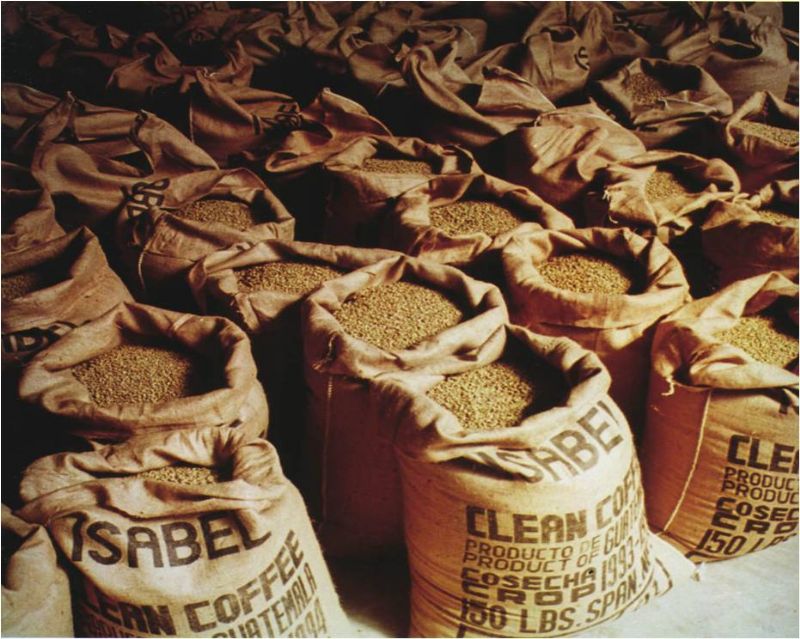Introduction to the treatment of Coffee Raw beans there are several treatment methods for coffee prices of domestic coffee raw beans
Pulped-natural, also known as honey treatment (Miel Process in Spanish), is said to refer to the process of making raw beans that are sun-dried with mucous membranes.
The honey treatment process is vulnerable to pollution and mildew, so it needs to be closely watched throughout the process, constantly turning, and speeding up drying, so as to avoid bad fermentation flavor. Its advantage is that it can best preserve the original sweet flavor of coffee ripe fruit, making the coffee show elegant black sugar flavor and drupe flavor, while the berry flavor also supports the basic aroma of red wine, which is considered to be a very elegant product. The popularity of honey-treated boutique coffee beans is largely due to its sweet and thick characteristics. In recent years, more and more boutique coffee beans called "Miel Process" have become the preferred material for international boutique coffee contestants. Mechanical semi-washing-economical and affordable
Not all producing areas can use the Brazilian half-sun method. If the producing area with heavy moisture is allowed to take out the pectin pods and expose them outdoors, it is not only not easy to be dehydrated and hard, but also easy to parasitize molds. Therefore, mechanical semi-washing has been developed in areas with heavy humidity, which saves both labor and water.
First of all, the red fruit and half-green and half-red fruit sunk into the sink into the pulp sieving machine to remove the full pectin, and there is no need to take it to the sun, let alone pour it into the trough to ferment, but directly into the nearby pectin scraper (Demucilager) with a small amount of water, which can mechanically scrape off the sticky pectin shavings, take out the smooth pods, and expose them outdoors until the water content is reduced to 12%.
In addition, there are in vivo fermentation methods, such as Kopi Luwak raw beans are fermented and shelled in civets. Others, such as shit coffee, monkey coffee and so on, are semi-sunburned in Brazilian style-naturally remove pectin:
Brazil used to use the method of tanning in the past, and there was a big difference in quality, which made Brazil Chongqing synonymous with low-to-middle quality. However, in order to improve its quality and reverse its image, the world's largest coffee producer carried out a quality revolution in the 1990s and vigorously promoted the global half-sun method.
Brazilian coffee fields are endless and are mostly harvested mechanically in order to meet the economic benefits. When 75% of the coffee fruit in the coffee garden turns red, mechanical harvesting is started, followed by the same pre-washing operation, which is moved into the sink to remove floating beans, sift out the sunken beans, and then use a large pulp screening machine to dig out the pulp and remove the pods covered with pectin. The next stage is separate from the washing method: the sticky pods do not need to be moved into the tank to ferment, but to the outdoor bean drying farm. Because of the dry climate in Brazil, the sticky pectin on the pods will harden in about a day or so. Then use a large number of manpower to turn up and down, so that the pods dry evenly inside and outside, so as not to return to moisture and stink. In about two to three days, with the help of the natural force of the sun pass and dry climate, the pods can achieve a certain degree of dehydration. Then further dry with a dryer, the water content is reduced to 10.5%, and the pods are stored in a special container for about 10 days to further mature, in order to stabilize the quality, remove the sheepskin (pods) before export, remove the coffee beans, and pack them in grades.

Important Notice :
前街咖啡 FrontStreet Coffee has moved to new addredd:
FrontStreet Coffee Address: 315,Donghua East Road,GuangZhou
Tel:020 38364473
- Prev

What kind of milk does coffee go with? how do you play the coffee machine? how do you play the milk foam?
1. Prepare the milk (also whole milk) and heat the milk to 60 ~ 70 degrees. Milk can be directly placed in a milk bubble to be processed on a gas stove or induction cooker, or it can be heated in a porcelain cup or glass in a microwave oven. If you use the microwave oven, because you want to pour into the bubble machine, it will absorb a certain temperature, and the heating temperature should be slightly higher. But not higher than 75.
- Next

Coffee knowledge Popularization what is Honey to treat Coffee beans
What is honey-treated coffee beans? Honey treatment, called Honey Process or Miel Process, is used in coffee gardens in Costa Rica (Costa Rica), Panama (Panama) and Guatemala (Guatemala), which is called Honey Coffee. Honey treatment is a kind of treatment between sun treatment and water washing. It keeps the coffee.
Related
- What is the meaning of lactic acid fermentation with coffee bean treatment?
- How to judge the state of foam by sound?
- How does the latte pull out the unicorn pattern? Come to get for a little trick to improve the flower pull!
- Will flower pulling affect the taste of the latte?
- Do you know the history of coffee?
- The difference between honey treatment and sun washing what is raisin honey treatment?
- What kind of milk can a novice use to make coffee foam to keep the foam longer? The correct method and skills of milking tutorial sharing
- Why do washed coffee beans taste sour? Flavor characteristics of washed Coffee
- Introduction to the skill of how to practice the size and height of water injection around the circle of hand-brewed coffee
- How do beginners practice coffee flower drawing from scratch?

